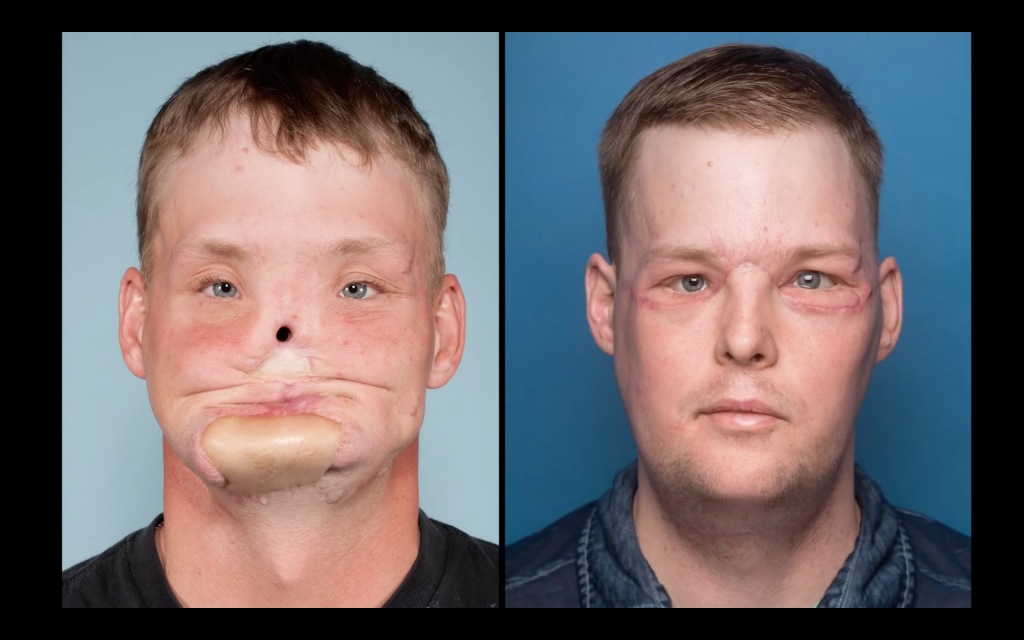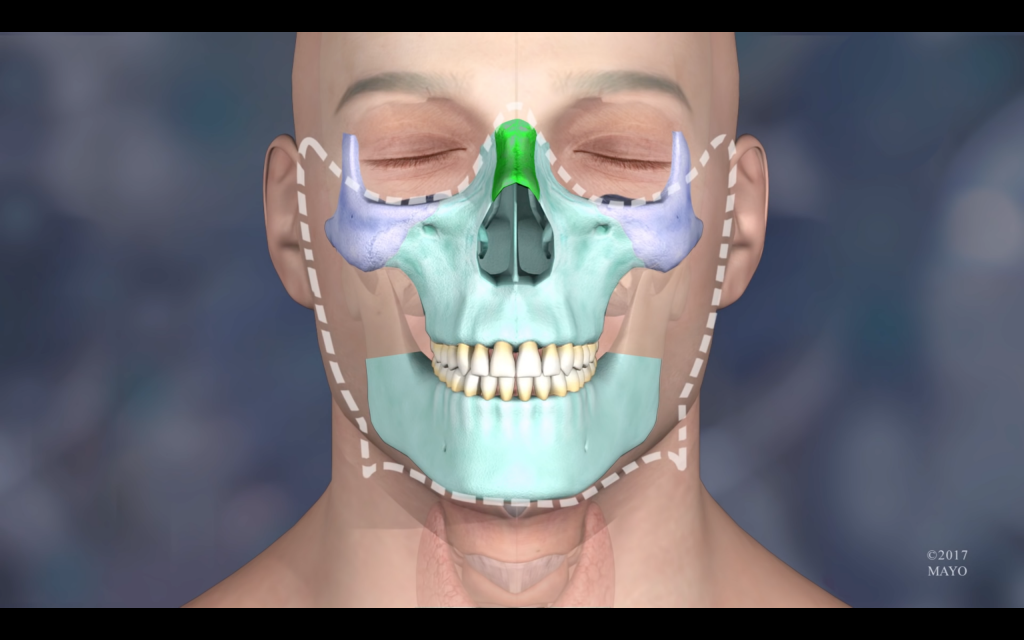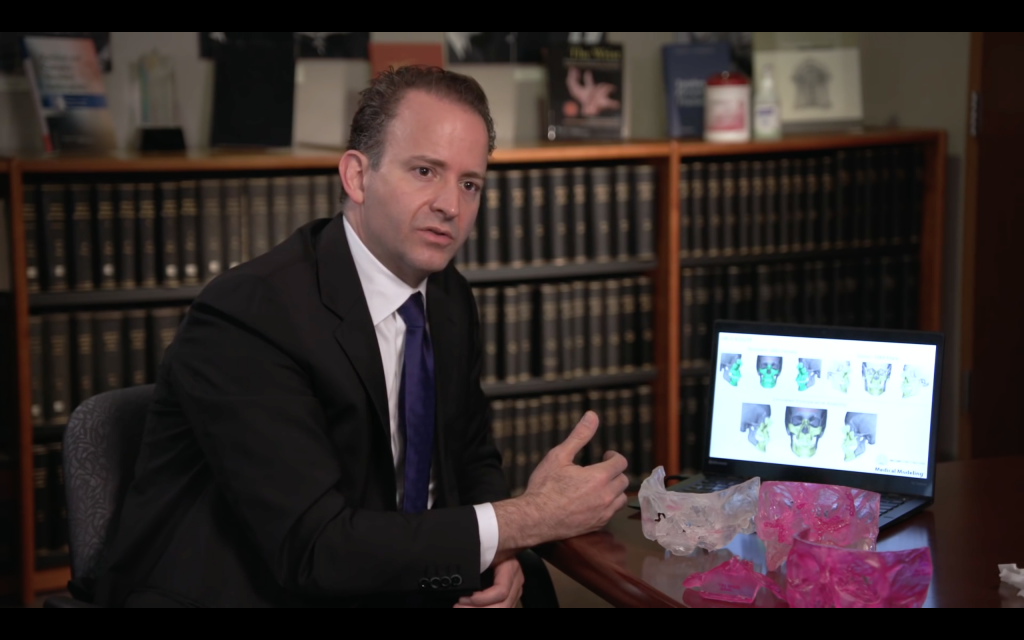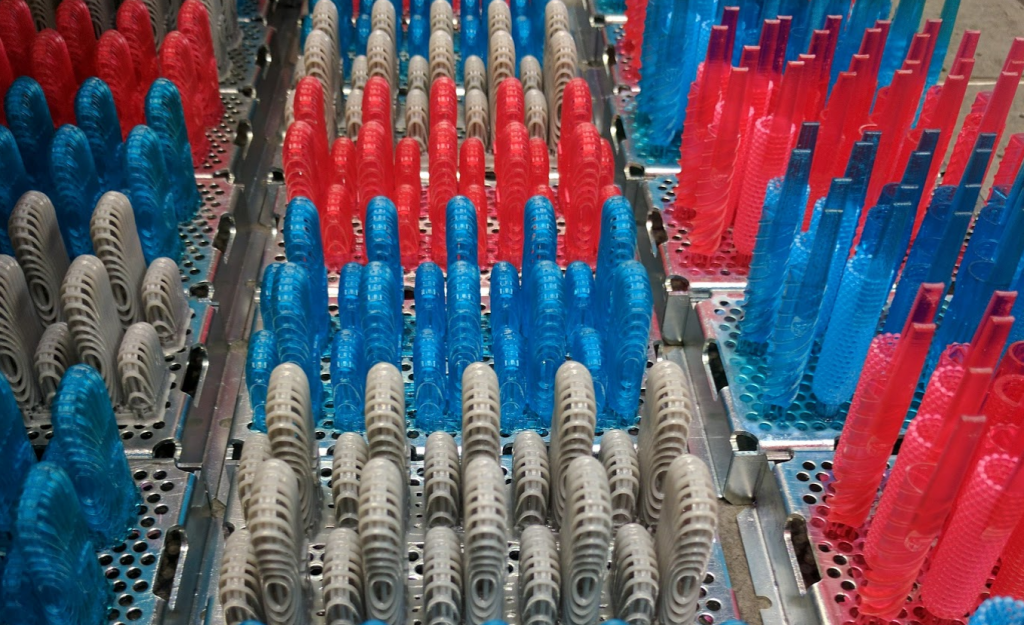3D printed models and surgical guides made by South Carolina’s 3D Systems have helped to give 32-year-old Andy Sandness a successful face transplant.

Speaking to reporters at Minnesota’s Mayo Clinic before the operation Sandness, who attempted suicide in 2006, says, “Right now, I’m calm and collected. But 24 hours ago when I got the phonecall I was bouncing of the walls.”
56 hour facial transplantation surgery
Face transplants are incredibly rare in medicine due to the complexity of facial nerve structure, and the availability of donors. In Sandness’ case it is perhaps even more complex, as the transplant required full reconstruction of almost all the tissue below his eyes.

Commenting on the complexity of the procedure Dr. Samir Mardini, Surgical Director of the Mayo Clinic, says,
A face transplantation is a combination of so many other procedures that we do. Including eyelid surgery, jaw surgery, facial nerve surgery…
In total, the procedure required the combined effort of 9 surgeons and 40 operation staff: it took 56 hours to complete.
3D Systems surgical planning
Thousands of steps were required to accurately map the facial nerves on both the donor and the patient to preserve the tissue, and ensure that Sandness’ would be able to move his face in a naturalistic manner after the operation.

Practice using 3D printed models was crucial to the process, as Dr. Mardini says,
Using this technology of 3D modeling, printing, and virtual surgical planning is extremely beneficial. They would have cutting guides for us, that we would clip on the bones, that would give us the exact location of the cut, the exact angle of the cut, so when we took to donor’s face and put it on the recipient it would fit perfectly.
After 3 weeks of healing, Sandness was given a first glimpse of his face in a mirror and noted to a tearful Dr. Mardini that it far exceeded his expectations.
In January 2017, a second procedure was performed to refine the features and promote the development of nerve cells in the face. Sandness has since made a full recovery and remarks,
I just feel like a normal person. Walking around outside, going to shopping malls, nobody asks any questions. Nobody stares. I feel like another face in the crowd.
The 3D medical expert
3D Systems’ 3D printers and expertise were also called upon for the landmark separation surgery of conjoined twins Jadon and Anias McDonald. The U.S. company has become an authority on 3D printing for medical procedures, and in January 2017 acquired material company Vertex-Global that will bring their high-speed Figure 4 platform into the dental market.

For more of the latest news in 3D printing for the medical industry, sign up to the 3D Printing Industry newsletter here. You can also follow us on Twitter @3Dprintindustry, or like us on Facebook.
Featured image shows 32 year old Andrew Sandness from Wyoming after facial reconstruction surgery. Quotes and images featured in this article are taken from the Mayo Clinic’s video reporting the story on YouTube here.


